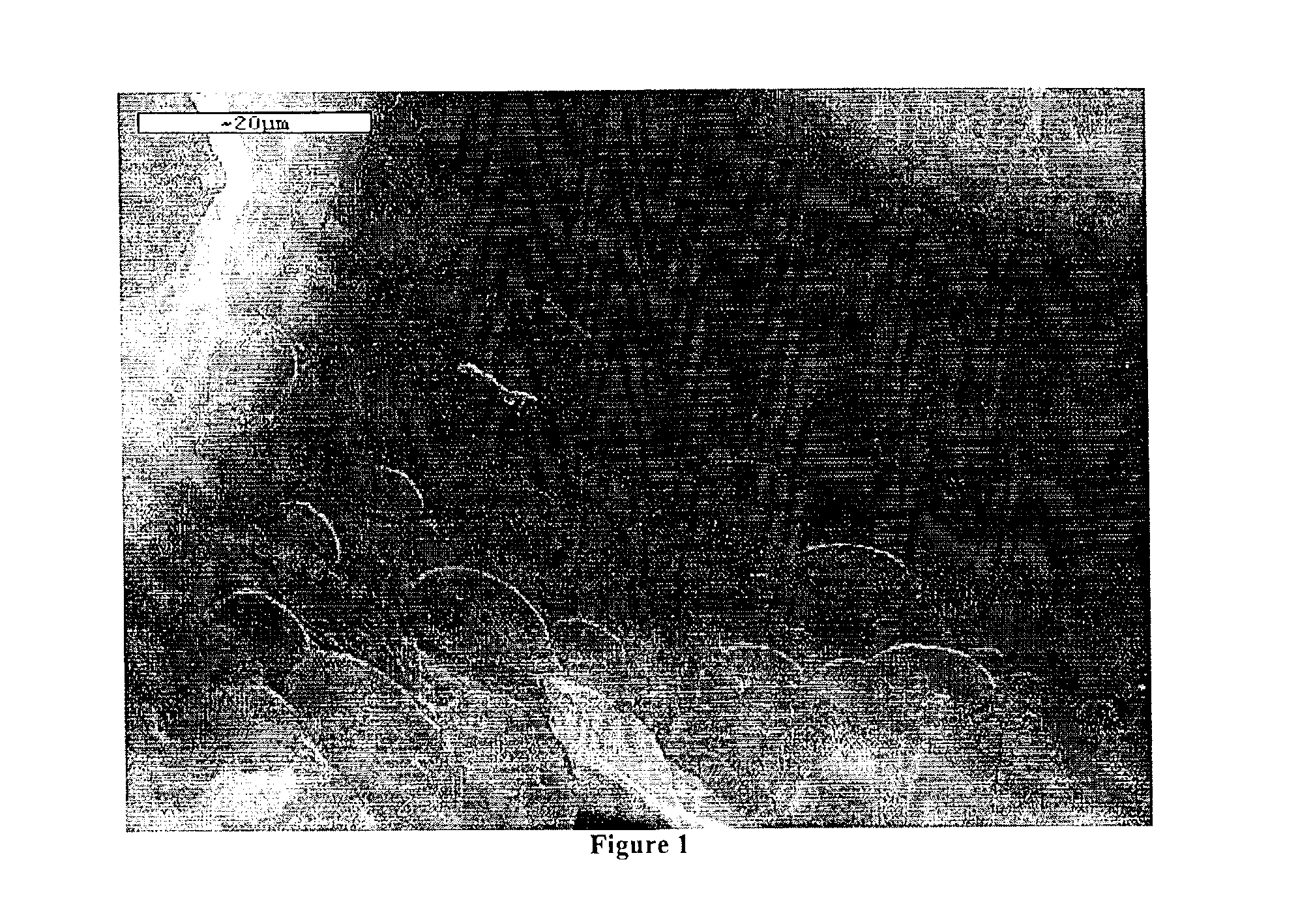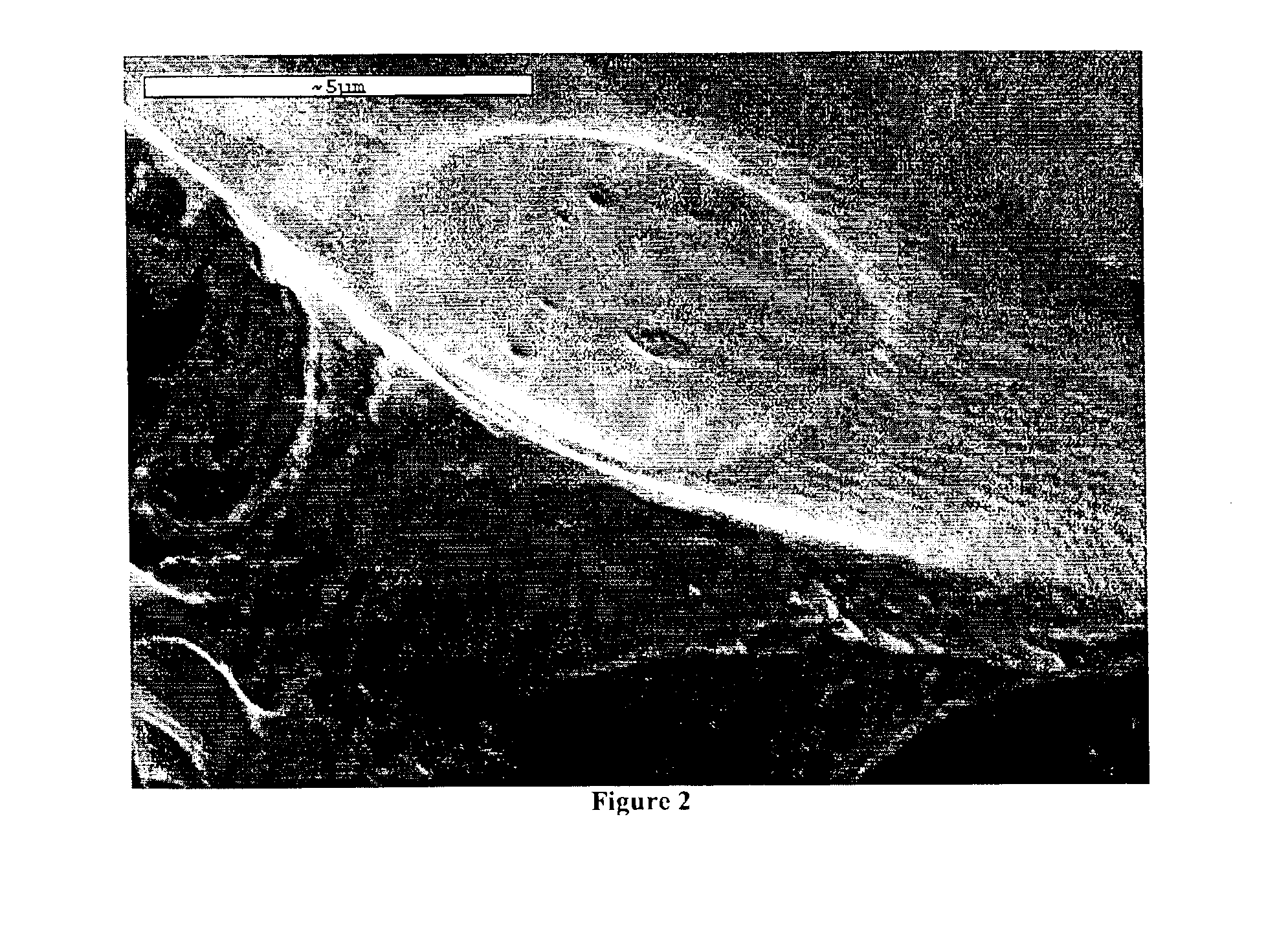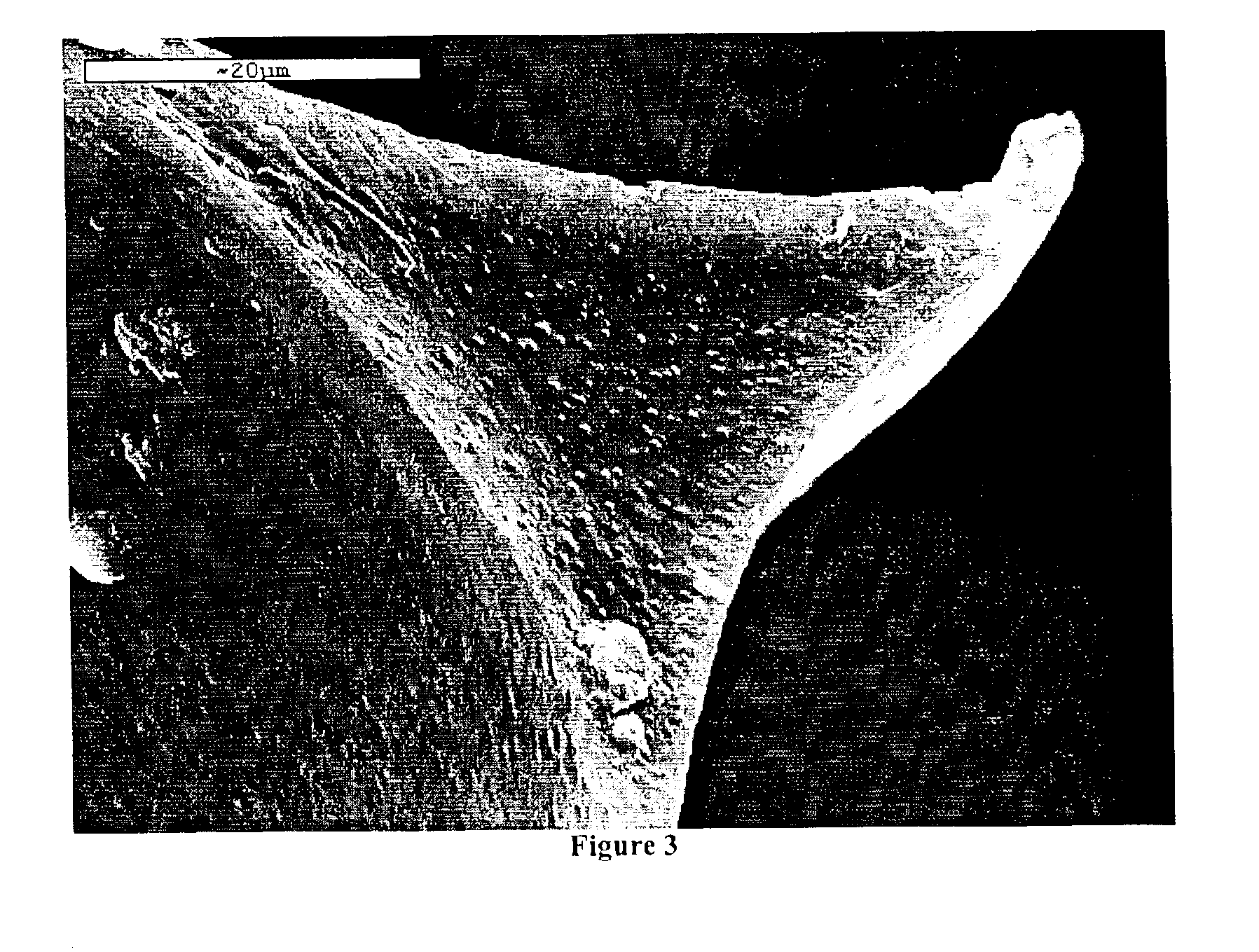Process for making a flexible polyurethane foam
a polyurethane foam and polyurethane technology, applied in the field of preparing flexible polyurethane foam and to flexible polyurethane foams, can solve the problems of deterioration of foam properties such as hysteresis and related compression set properties, unoptimized blowing efficiency, etc., and achieve good load-bearing properties, good recovery properties, and low foam density
- Summary
- Abstract
- Description
- Claims
- Application Information
AI Technical Summary
Benefits of technology
Problems solved by technology
Method used
Image
Examples
example 1
[0052]A polyisocyanate composition was prepared by mixing 84.3 parts by weight of MDI comprising 50% by weight of 4.4′-MDI and 50% by weight of 2,4′+2,2′-MDI and 15.7 parts by weight (pbw) of a polymeric MDI having an NCO value of 30.7% by weight and comprising 35.4 pbw of 4,4′-MDI, 2.3 pbw of 2,4′+2,2′-MDI and 62.3 pbw of homologues having an isocyanate functionality of 3 or more.
[0053]A polyol composition was prepared by mixing 36.2 pbw of ARCOL 1374 polyol, 9.4 pbw of DALTOCEL F526 polyol, 2.9 pbw of water, 0.24 pbw of EPK-38-1 (a surfactant sold by Goldschmidt), 0.34 pbw of a mixture of IRGANOX 1135 anti-oxydants and IRGAFOS TNPP anti-oxydants (50 / 50, w / w), both from Ciba.
[0054]The polyisocyanate composition (49.8 pbw) and the polyol composition (50.3 pbw) were mixed and allowed to react under free-rise conditions, the isocyanate index was 105. The foam obtained was a flexible polyurethane foam containing particulate material comprising urethane and urea groups as determined by ...
example 2
[0056]Scanning Electron Microscopy images were made of foams made from PIPA polyol, PHD polyol and from ingredients according to the present invention. Pictures show the following:
[0057]
FigureScale bar (μm)Foam120invention25invention320PIPA45PIPA520PHD610PHD
[0058]First of all the difference in particle size is noticeable (compare FIGS. 1, 3 and 5). In FIG. 1, big particles with clear boundaries are visible; in FIG. 3 the particles are much smaller and in FIG. 5 the boundaries are not so clear and the PHD material seems to form conglomerates with not sharply defined boundaries. Secondly, FIGS. 1 and 2 nicely show the particles cleaved at the fracture surface of the foam struts. FIGS. 3-6 show particulate material, which did not cleave.
example 3
[0059]58 pbw of DALTOCEL F428 polyol, 30 pbw of polyol X, 12 pbw of DALTOCEL F526 polyol, 7 pbw of water, 1.2 pbw of B4113 (a surfactant from Goldschmidt), 0.6 pbw of D8154 (an amine catalyst from Air Products), 0.1 pbw of NIAX A1 catalyst (from Union Carbide) and 0.3 pbw of D33 LV (a catalyst from Air Products) where mixed in an open bucket of 101. To this was added 110 pbw of a mixture of the MDI and polymeric MDI used in example 1 in a weight ratio of 4:1. The index was 100. This mixture was allowed to react. A flexible polyurethane was obtained having open cells and a free rise density of 19 kg / m3.
[0060]Polyol X is an polyoxyethylene polyoxypropylene polyol having a nominal functionality of 3, an average equivalent weight of about 2000, having an EO content of 28% by weight, an EO-capped content of 15% by weight and the remainder of the EO being randomly distributed with the PO; the primary hydroxyl content is about 85% and the monool content is about 12% mole.
PUM
| Property | Measurement | Unit |
|---|---|---|
| hydroxyl value | aaaaa | aaaaa |
| particle size | aaaaa | aaaaa |
| particle size | aaaaa | aaaaa |
Abstract
Description
Claims
Application Information
 Login to View More
Login to View More - R&D
- Intellectual Property
- Life Sciences
- Materials
- Tech Scout
- Unparalleled Data Quality
- Higher Quality Content
- 60% Fewer Hallucinations
Browse by: Latest US Patents, China's latest patents, Technical Efficacy Thesaurus, Application Domain, Technology Topic, Popular Technical Reports.
© 2025 PatSnap. All rights reserved.Legal|Privacy policy|Modern Slavery Act Transparency Statement|Sitemap|About US| Contact US: help@patsnap.com



